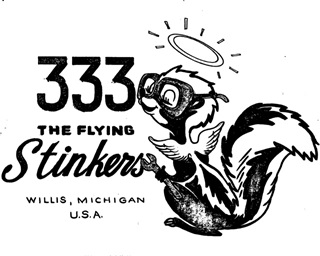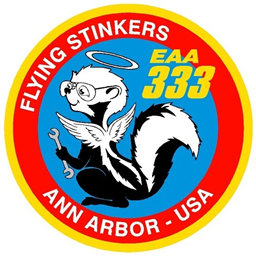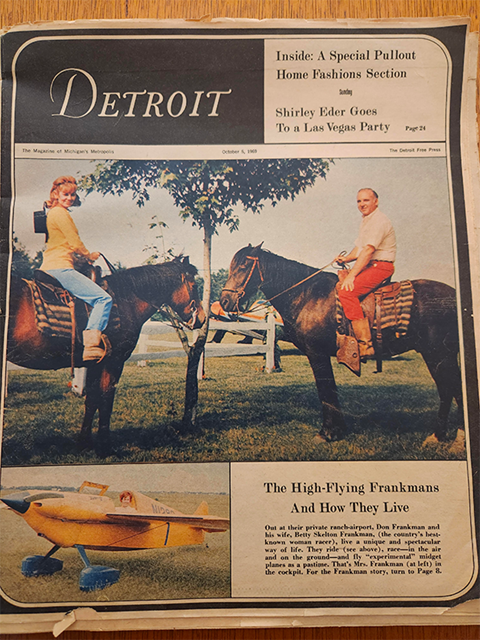Chapter 333 was founded in February 1969 at Frankman Ranchaero, otherwiseknown as the home and grass landing strip of Don and Betty Frankman in Willis, MI1. Don and Betty were avid aviators well known in EAA circles. After all, Don owned and flew the original Wittman Tailwind, now at the EAA museum in Oshkosh, and Betty owned and flew the original Pitts Special, now at the Udvar-Hazy Center of the Smithsonian’s National Air and Space Museum near Washington, D.C.
Betty was professionally and famously known as Betty Skelton, with a lengthy list of motorsports achievements of all kinds credited to her. It has been said that Betty made the Pitts Special famous.2 She named her plane Little Stinker, and emblazoned it with a cartoon skunk. From this, Chapter 333 took the name Flying Stinkers and developed a variation of the skunk as its own logo which is still in use to this day. The original club newsletter was called The Scentinel, an obvious pun, portmanteau, and beloved dad-joke of the skunk mascot.
 |
 |
By 1971 Don and Betty moved to Florida, leaving the Flying Stinkers in the hands of capable aviators who kept the chapter active. The Flying Stinkers started meeting at the Ann Arbor airport in 1972 and have maintained a regular schedule of in-person and online meetings to this day.
In addition to flying, building, and preserving aircraft for education and recreation, the Flying Stinkers of Chapter 333 also perform aviation related community service, such as:
- Restoring. In 2000, Chapter 333 rebuilt Ann Arbor Airport’s historic terminal building on South State Road, using its own funds. The chapter remains caretakers of this building and uses it as its headquarters.
- Mentoring. For the first time in 2020, Chapter 333 was selected by EAA HQ to administer one Ray Aviation scholarship. This competitive program offers a $10,000 scholarship, funded by the Ray Foundation, to mentor a youth (ages 16-18) aiming to work toward a private pilot license.
- Hosting. Chapter 333 organizes an annual pancake breakfast for the community in June. Over 1,000 guests come to the airport each year for hot pancakes and special activities for kids.
- Caretaking. Chapter 333 helps maintain otherwise vacant hangars that once housed an FBO (fixed base operator – a business offering aviation related services at an airport). The hangars are being used to store aircraft and as a place where homebuilt aircraft can complete the final assembly process leading up to first flight.
- Beautifying. Chapter 333 is one of several aviation groups that participate in Washtenaw County’s adopt-a-road program near the airport.
1The airstrip is still shown on the Detroit sectional chart as Downwind Acres just southwest of Detroit's class B surface airspace.
2By no less than Steve Wittman himself. Quotation found on the Smithsonian's Air and Space Museum website.
